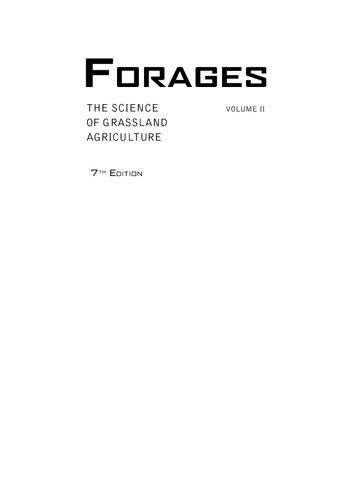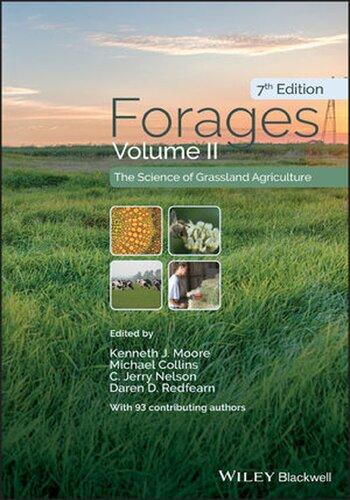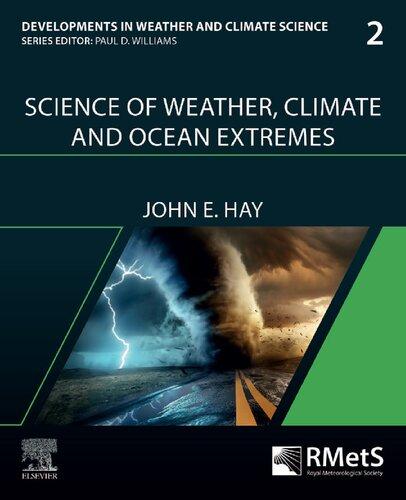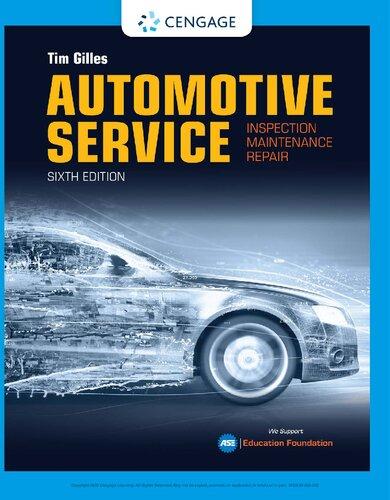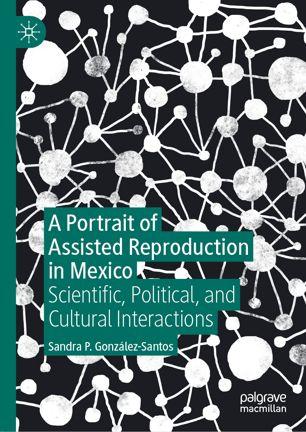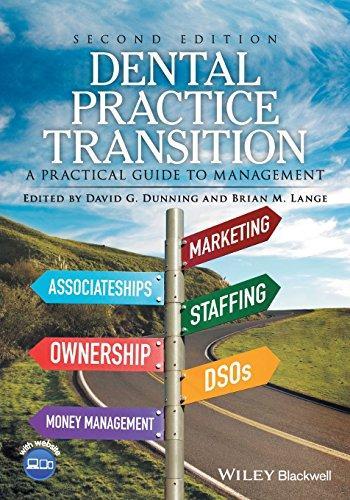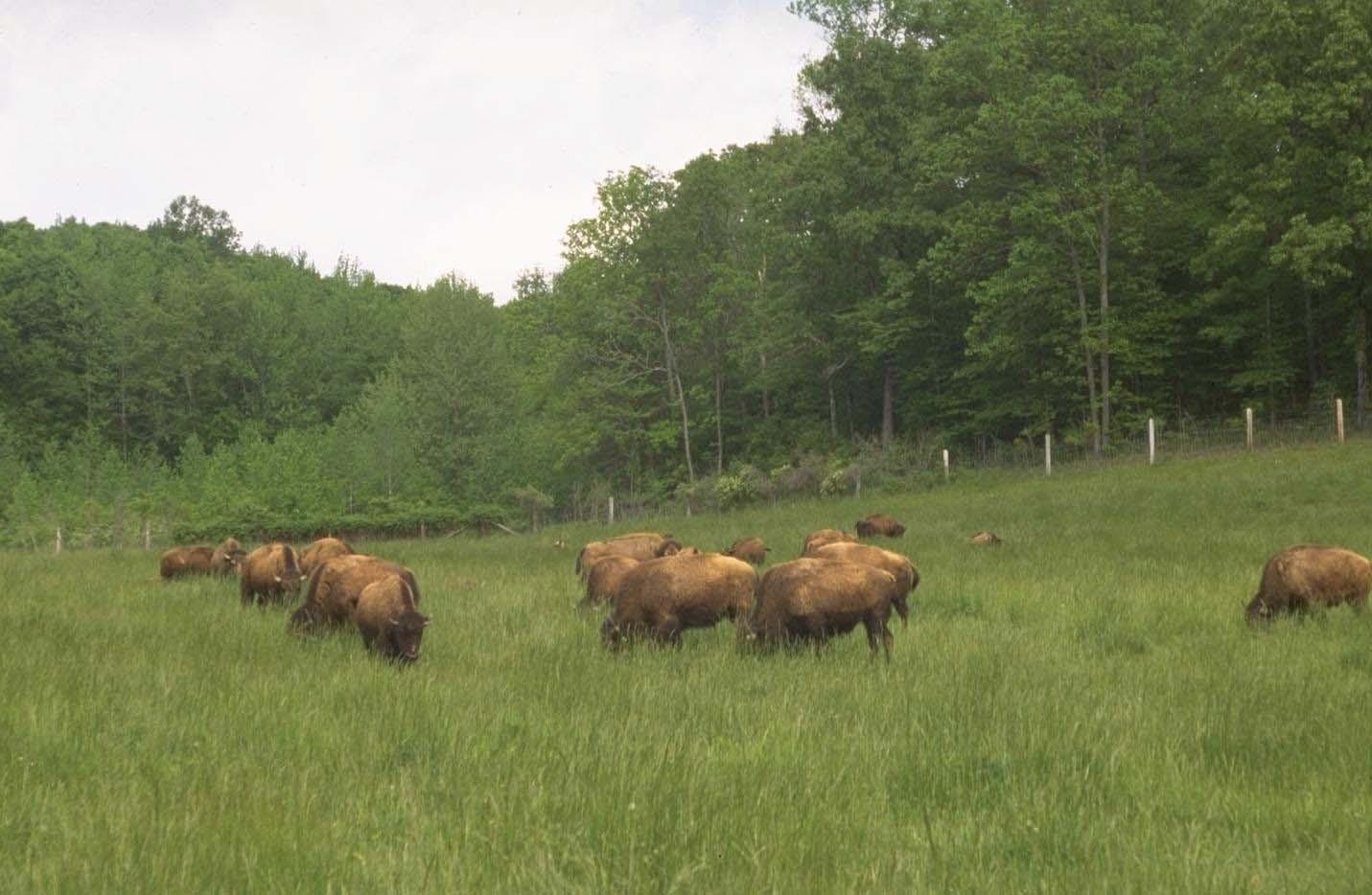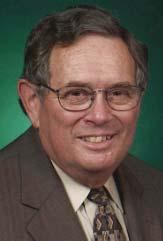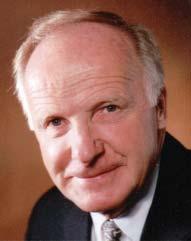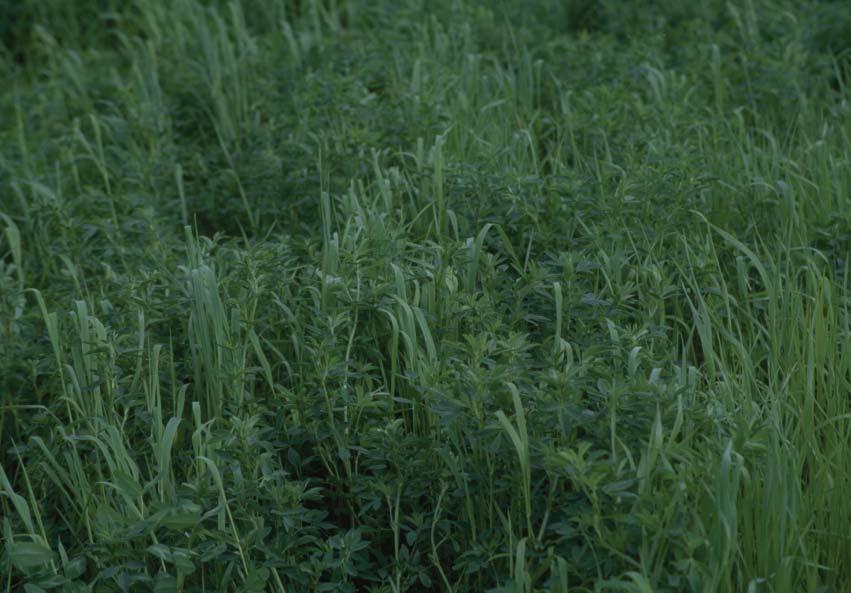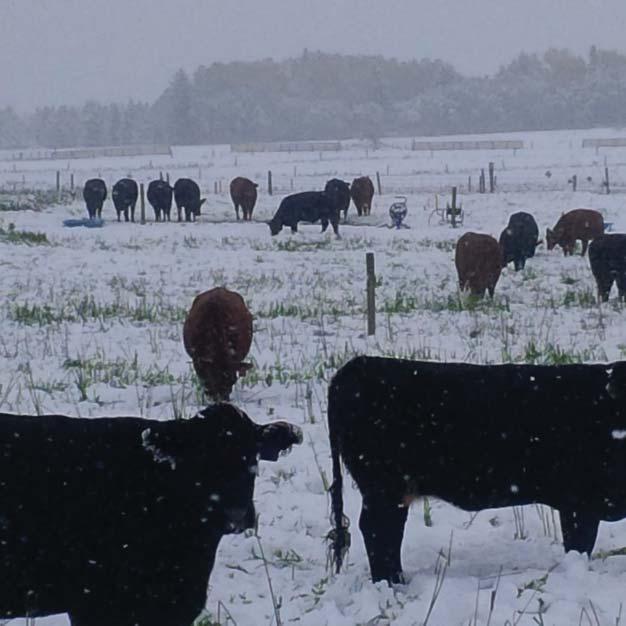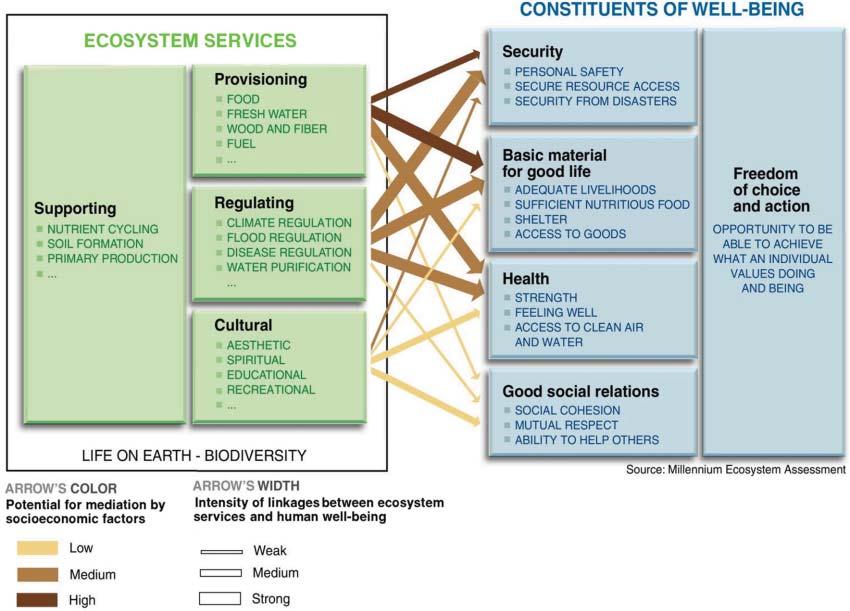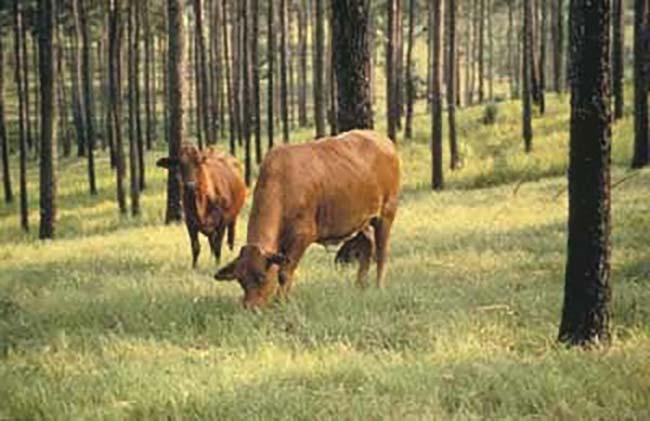https://ebookmass.com/product/forages-volume-2-the-scienceof-grassland-agriculture-7th-edition-kenneth-j-moore/
Instant digital products (PDF, ePub, MOBI) ready for you
Download now and discover formats that fit your needs...
Forages, Volume 2: The Science of Grassland Agriculture
Kenneth J. Moore (Editor)
https://ebookmass.com/product/forages-volume-2-the-science-ofgrassland-agriculture-kenneth-j-moore-editor/ ebookmass.com
The Collected Papers of J. L. Moles - Volume 2 John Marincola
https://ebookmass.com/product/the-collected-papers-of-j-l-molesvolume-2-john-marincola/
ebookmass.com
Science of Weather, Climate and Ocean Extremes (Volume 2) (Developments in Weather and Climate Science, Volume 2) 1st Edition John E. Hay
https://ebookmass.com/product/science-of-weather-climate-and-oceanextremes-volume-2-developments-in-weather-and-climate-sciencevolume-2-1st-edition-john-e-hay/ ebookmass.com
Automotive Service: Inspection, Maintenance, Repair Book 6th Edition Tim Gilles
https://ebookmass.com/product/automotive-service-inspectionmaintenance-repair-book-6th-edition-tim-gilles/
ebookmass.com
One Little Temptation (Lost and Found Book 5) Elizabeth
https://ebookmass.com/product/one-little-temptation-lost-and-foundbook-5-elizabeth-lennox/
ebookmass.com
Lo que nadie nos dijo de Jerry Hancock Alexander Wickner
https://ebookmass.com/product/lo-que-nadie-nos-dijo-de-jerry-hancockalexander-wickner/
ebookmass.com
A Portrait of Assisted Reproduction in Mexico: Scientific, Political, and Cultural Interactions 1st ed. Edition
Sandra P. González-Santos
https://ebookmass.com/product/a-portrait-of-assisted-reproduction-inmexico-scientific-political-and-cultural-interactions-1st-ed-editionsandra-p-gonzalez-santos/ ebookmass.com
Spying
Through
A Glass Darkly: The Ethics Of Espionage And Counter-Intelligence 1st Edition Cécile Fabre
https://ebookmass.com/product/spying-through-a-glass-darkly-theethics-of-espionage-and-counter-intelligence-1st-edition-cecile-fabre/
ebookmass.com
Dental Practice Transition: A Practical Guide to Management 2nd Edition
https://ebookmass.com/product/dental-practice-transition-a-practicalguide-to-management-2nd-edition/
ebookmass.com
That Deep River Feeling Jackie Ashenden
https://ebookmass.com/product/that-deep-river-feeling-jackieashenden-2/
ebookmass.com
FORAGES
THESCIENCE OFGRASSLAND
AGRICULTURE
VOLUMEII
7TH EDITION
FORAGES
THESCIENCE OFGRASSLAND AGRICULTURE
7TH EDITION
Editedby
KennethJ.Moore
MichaelCollins
C.JerryNelson
DarenD.Redfearn
With93 contributing authors
VOLUMEII
Thisseventheditionfirstpublished2020
©2020JohnWiley&SonsLtd
EditionHistory
©1951,1962,1973,1985,1995IowaStateUniversityPress
©2007BlackwellPublishing
Allrightsreserved.Nopartofthispublicationmaybereproduced,storedinaretrievalsystem,ortransmitted,inany formorbyanymeans,electronic,mechanical,photocopying,recordingorotherwise,exceptaspermittedbylaw.Advice onhowtoobtainpermissiontoreusematerialfromthistitleisavailableathttp://www.wiley.com/go/permissions.
TherightofKennethJ.Moore,MichaelCollins,C.JerryNelsonandDarenD.RedfearntobeidentifiedasEditorsof theeditorialmaterialinthisworkhasbeenassertedinaccordancewithlaw.
RegisteredOffice
JohnWiley&SonsLtd,TheAtrium,SouthernGate,Chichester,WestSussex,PO198SQ,UK
EditorialOffice
TheAtrium,SouthernGate,Chichester,WestSussex,PO198SQ,UK
Fordetailsofourglobaleditorialoffices,customerservices,andmoreinformationaboutWileyproductsvisitusat www.wiley.com.
Wileyalsopublishesitsbooksinavarietyofelectronicformatsandbyprint-on-demand.Somecontentthatappearsin standardprintversionsofthisbookmaynotbeavailableinotherformats.
LimitofLiability/DisclaimerofWarranty
Whilethepublisherandauthorshaveusedtheirbesteffortsinpreparingthiswork,theymakenorepresentationsor warrantieswithrespecttotheaccuracyorcompletenessofthecontentsofthisworkandspecificallydisclaimall warranties,includingwithoutlimitationanyimpliedwarrantiesofmerchantabilityorfitnessforaparticularpurpose. Nowarrantymaybecreatedorextendedbysalesrepresentatives,writtensalesmaterialsorpromotionalstatementsfor thiswork.Thefactthatanorganization,website,orproductisreferredtointhisworkasacitationand/orpotential sourceoffurtherinformationdoesnotmeanthatthepublisherandauthorsendorsetheinformationorservicesthe organization,website,orproductmayprovideorrecommendationsitmaymake.Thisworkissoldwiththe understandingthatthepublisherisnotengagedinrenderingprofessionalservices.Theadviceandstrategiescontained hereinmaynotbesuitableforyoursituation.Youshouldconsultwithaspecialistwhereappropriate.Further,readers shouldbeawarethatwebsiteslistedinthisworkmayhavechangedordisappearedbetweenwhenthisworkwaswritten andwhenitisread.Neitherthepublishernorauthorsshallbeliableforanylossofprofitoranyothercommercial damages,includingbutnotlimitedtospecial,incidental,consequential,orotherdamages.
LibraryofCongressCataloging-in-Publicationdataappliedfor
HardbackISBN:9781119436577
CoverDesign:Wiley
CoverImage:©PeteRyan/GettyImages
InsetImages:CourtesyofMikeCollinsandKenMoore
Setin9/11ptAGaramondProbySPiGlobal,Chennai,India
PrintedandboundbyCPIGroup(UK)Ltd,Croydon,CR04YY 10987654321
InPraiseofGrass
Nextinimportancetothedivineprofusionofwater,light, andair,thosethreegreatphysicalfactswhichrenderexistencepossible,maybereckonedtheuniversalbeneficence ofgrass.
Grassistheforgivenessofnatureherconstant benediction....Forestsdecay,harvestsperish,flowersvanish,butgrassisimmortal.Ityieldsnofruitin earthorair,andyetshoulditsharvestfailinasingleyear, faminewoulddepopulatetheearth.
Grasssoftenstherudeoutlineoftheworld.Itstenaciousfibersholdtheearthinplace.Itinvadesthesolitude ofdeserts,climbstheinaccessibleslopesandforbiddingpinnaclesofmountains,modifiesclimates,and determinesthehistory,character,anddestinyofnations.
JohnJamesIngalls KansasMagazine 1872
GrasslandScience
Whoevercouldmake...twobladesofgrasstogrowuponaspotofgroundwhereonlyone grewbefore,woulddeservebetterofmankind,anddomoreessentialservicetohiscountry thanthewholeraceofpoliticiansputtogether.
JonathanSwift fromGulliver’stravels,1726
Contents
Preface,xiii
ListofContributors,xv
Dedication,xxi
PARTI FORAGEPLANTS,1
1Perspectives,Terminology,andClassification,3
C.JerryNelson,ProfessorEmeritus,KennethJ.Moore,DistinguishedProfessor,MichaelCollins,ProfessorEmeritusand DarenD.Redfearn,AssociateProfessor
2GrassMorphology,23
C.JerryNelson,ProfessorEmeritusandKennethJ.Moore,DistinguishedProfessor
3LegumeStructureandMorphology,51
JohnJennings,ProfessorandJamieFoster,Professor
4CarbonMetabolisminForagePlants,65
JeffreyJ.Volenec,ProfessorandC.JerryNelson,ProfessorEmeritus
5MineralNutrientAcquisitionandMetabolism,85
SylvieM.Brouder,WickershamChairandProfessorandJeffreyJ.Volenec,Professor
6Plant-WaterRelationsinForageCrops,113
JenniferW.MacAdam,ProfessorandC.JerryNelson,ProfessorEmeritus
7GrowthandDevelopment,127
RobertB.Mitchell,ResearchAgronomist,DarenD.Redfearn,AssociateProfessorandKennethJ.Moore, DistinguishedProfessor
PARTII FORAGEECOLOGY,149
8Climate,Climate-ChangeandForageAdaptation,151
VernS.Baron,ResearchScientistandGillesBélanger,ResearchScientist
9PlantInteractions,187
JohnA.Guretzky,GrasslandSystemsEcologist
10Plant-HerbivoreInteractions,201
LynnE.Sollenberger,DistinguishedProfessorandMarceloO.Wallau,AssociateProfessor
11NutrientCyclinginForageProductionSystems,215
DavidA.Wedin,ProfessorandMichaelP.Russelle,SoilScientist(Retired)
12ForagesforConservationandImprovedSoilQuality,227
JohnF.Obrycki,ORISEFellowandDouglasL.Karlen,SoilScientist(Retired)
13ForagesandtheEnvironment,249
MattA.Sanderson,ResearchAgronomistandResearchLeader(Retired)andMarkA.Liebig,SoilScientist
PARTIII FORAGESPECIES,261
14Cool-SeasonLegumesforHumidAreas,263
CraigC.Sheaffer,Professor,GeraldW.Evers,ProfessorEmeritusandJacobM.Jungers,AssociateProfessor
15LegumesforTropicalandSubtropicalAreas,277
WilliamD.Pitman,ProfessorandJoãoM.B.Vendramini,AssociateProfessor
16Cool-SeasonGrassesforHumidAreas,297
MichaelD.Casler,ResearchGeneticist,RobertL.Kallenbach,AssociateDeanandGeoffreyE.Brink,Research Agronomist
17GrassesforAridandSemiaridAreas,313
DarenD.Redfearn,AssociateProfessor,KeithR.Harmoney,RangeScientistandAlexanderJ.Smart,Professorand RangelandManagementSpecialist
18Warm-SeasonGrassesforHumidAreas,331
LynnE.Sollenberger,DistinguishedProfessor,JoãoM.B.Vendramini,AssociateProfessor,CarlosG.S.Pedreira, AssociateProfessorandEstebanF.Rios
19ForbsandBrowseSpecies,347
DavidP.Belesky,ClinicalAssociate&Director,JohnW.Walker,ProfessorandResidentDirector,KimberlyA.Cassida, ForageExtensionSpecialistandJamesP.Muir,Professor
PARTIV FORAGESYSTEMS,367
20SystemsforTemperateHumidAreas,369
JeromeH.Cherney,Professor,RobertL.Kallenbach,AssociateDeanandValentínD.PicassoRisso,AssistantProfessor
21ForageSystemsfortheTemperateSubhumidandSemiaridAreas,387
JohnR.Hendrickson,ResearchRangelandManagementSpecialistandCoreyMoffet,ResearchRangelandManagement Specialist
22SystemsfortheWarmHumidAreas,407
WilliamD.Pitman,ProfessorandMontgomeryW.Alison,ExtensionForageSpecialist
23SystemsforHumidTransitionAreas,419
RenataN.Oakes,AssistantProfessorandDennisW.Hancock,CenterDirector
24ForageSystemsforAridAreas,433
DanielH.Putnam,ForageExtensionSpecialistandTimDelCurto,ProfessorandNancyCameronChair
PARTV FORAGEPRODUCTIONANDMANAGEMENT,453
25ForageEstablishmentandRenovation,455
MarvinH.Hall,Professor,YoanaC.Newman,AssociateProfessorandJessicaA.Williamson,AssistantProfessor
26FertilizationandNutrientManagement,473
DavidJ.Barker,ProfessorandStevenW.Culman,Professor
27IrrigationandWaterManagement,497
L.NielAllen,AssociateProfessorandIrrigationSpecialistandJenniferW.MacAdam,ProfessorofPlants, SoilsandClimate
28WeedManagement,515
RobertA.Masters,RangelandScientist(Retired),ByronB.Sleugh,ForageAgronomistandE.ScottFlynn, ForageAgronomist
29InsectManagement,535
R.MarkSulc,Professor,WilliamO.Lamp,ProfessorandG.DavidBuntin,Professor
PARTVI FORAGEIMPROVEMENT,551
30ForageBreeding,553
MichaelD.Casler,ResearchGeneticistandKennethP.Vogel,ResearchGeneticist(retired)
31BiotechnologyandMolecularApproachestoForageImprovement,567
E.CharlesBrummer,ProfessorandZeng-YuWang,Professor
32SeedProduction,581
JeffreyJ.Steiner,AssociateDirectorandTimL.Springer,ResearchAgronomist
PARTVII FORAGEQUALITY,593
33CarbohydrateandProteinNutritionalChemistryofForages,595
RonaldD.Hatfield,ResearchPlantPhysiologistandKennethF.Kalscheur,ResearchDairyScientist
34DigestibilityandIntake,609
DavidR.Mertens,PresidentandResearchDairyScientist(Retired)andRichardJ.Grant,Presidentand ResearchScientist
35PlantChemistryandAntiqualityComponentsinForage,633
NicholasS.Hill,ProfessorandCraigA.Roberts,Professor
36LaboratoryMethodsforEvaluatingForageQuality,659
WilliamP.Weiss,ProfessorandMaryBethHall,ResearchAnimalScientist
37AnimalMethodsforEvaluatingForageQuality,673
EricS.Vanzant,AssociateProfessor,RobertC.Cochran,ProfessorandWayneK.Coblentz,ResearchDairy Scientist/Agronomist
38PredictingForageQuality,687
DebbieJ.Cherney,ProfessorandDavidParsons,Professor
39FactorsAffectingForageQuality,701
KennethJ.Moore,CharlesF.Curtiss,DistinguishedProfessor,AndrewW.Lenssen,ProfessorandStevenL.Fales, EmeritusProfessor
PARTVIII FORAGEHARVESTINGANDUTILIZATION,719
40Post-HarvestPhysiology,721
WayneK.Coblentz,ResearchDairyScientist/Agronomist
41HayHarvestandStorage,749
C.AlanRotz,AgriculturalEngineer,KevinJ.Shinners,ProfessorandMatthewDigman,AssistantProfessor
42SilageProduction,767
RichardE.Muck,AgriculturalEngineer,LiminKungJr.,ProfessorandMichaelCollins,ProfessorandDirector Emeritus
43Biomass,Energy,andIndustrialUsesofForages,789
MattA.Sanderson,ResearchAgronomistandResearchLeader(Retired),PaulAdler,ResearchAgronomistandNealP. Martin,Director(Retired)
PARTIX PASTUREMANAGEMENT,801
44PastureDesignandGrazingManagement,803
LynnE.Sollenberger,DistinguishedProfessor,YoanaC.Newman,AssociateProfessorandBisoondatMacoon,Research Professor
45GrazingAnimalNutrition,815
GregoryLardy,DepartmentHeadandRichardWaterman,ResearchAnimalScientist
46GrazingAnimalBehavior,827
KarenL.Launchbaugh,HeadyProfessor
47Forage-InducedAnimalDisorders,839
TimA.McAllister,PrincipalResearchScientist,GabrielRibeiro,AssistantProfessor,KimStanford,ResearchScientist andYuxiWang,ResearchScientist
48GrazingSystemsandStrategies,861
MichaelCollins,ProfessorandDirectorEmeritus,KennethJ.Moore,DistinguishedProfessor,C.JerryNelson,Professor EmeritusandDarenD.Redfearn,AssociateProfessor
CommonandScientificNamesofForages,883
Glossary,893
Index,919
Preface
ForagesinTransition
Itisdauntingtoconsiderhowtoincreasethefoodsupply whileconservingnaturalresourcestofeedtheexpected10 billionpeopleworldwideby2050.Thismustoccurwith lessland,lesswater,lessfossilfuel,highercostsoflabor, andwillrequiremoreefficientuseofinputs.And,itmust bedonewhileprotectingtheenvironmentinthefaceof globalclimatechangeandgreaterpublicdemandforsustainability.Foragesandpastureswillplayacriticalroleby effectivelyusinglowerqualitylandresources,whilesimultaneously,supplyinganadequatequantityofhigh-quality andsafeproducts,especiallyanimalproducts.Emphasis willincreaseforforagesandpasturestocontributespecific ecosystemservices.
MuchofthelandresourceofNorthAmericaisoccupiedbygrasslandsandforagesmanagedbyranchersand farmersforyield,qualityandpersistence.However,the socialclimatesurroundingagricultureisrapidlychanging asthepublicbecomesmoreconcernedandevendistrustfulaboutmotivesandprioritiesoflandmanagement forincomeoversustainability.Howwillresearchand technicaladvancementofforagesandpasturesaddress thenon-productionfactorswhilemovingthediscipline forward?
VolumeIofthe7th editionofForages,anIntroduction toGrasslandAgriculture(2018),servesprimarilyasan undergraduatetextbook.Itemphasizesbasicrolesof thediversearrayofforageplants,theiradaptation,and principlesofmanagementpracticesusedforefficient animalproductionthatissustainable.VolumeIIof the7th editionofForages,theScienceofGrassland Agriculture(2020)givesmoredetailonhowbiological andphysicalprocessesincellsandtissuesaffectgrowth, foragequalityandpersistenceofindividualplants.We thenintegratethebasicknowledgeaboutindividual plantstotheirinteractioninplantcommunities,whether
harvestedmechanicallyorgrazedbyanimals,andhow theycontributeecosystemservices.
Forageyieldinresearchplotshasincreasedvery littleoverthepasthalfcentury.Relativefocusischangingfromincreasingyieldtoreducinginputcostsand improvingandretainingforagequality.Newcultivars andstrategiesfordiseaseandinsectcontrolhelpprotect yieldandimprovebothanimalperformanceandstand persistence.Newharvestingequipmentimprovesleaf retentionandshortensdryingtimetoreduceweathering losses.Improvedbalewrappingandsilagepreservation technologiesfurtherhelpretaindigestiblecomponents. Globalpositioninganddroneswillfindimportantuses forprecisionfarmingtoincreasemanagementefficiency.
Atthesametime,thepublicdesiresincreasedemphasisonecology,climatechange,ecosystemservices,animal welfare,andsustainableforageandpasturemanagement. Theseconcernshaveledtostrongerlinksamongforage scientists,animalscientists,ecologists,climatologistsand socialscientiststoformtransdisciplinaryfoundationsfor managingforagesandpastures.Thebroaderroleofforages andpastureswillleadtonewpoliciestoprovidequalityanimalproductsaswellasvaluableecosystemservices. Newsciencewillestablishthebestpoliciesandpractices.
ForagesNeedInnovation
Foragesandpasturescaneffectivelyuselandresources thatdonotcompetedirectlywithgrainandoilseed cropproduction.Ruminantsarecriticalsincetheyhave naturaladvantagesinconvertingfibrousplantmaterial intohighnutritionalvaluemeatandmilkproducts. Hundredsofplantscouldbecomesignificantforages inspecificenvironments,andbiotechnologywillhelp improvespeciesalreadyused.Directuseofperennialsfor renewableenergysourcescanreducedependenceonfossil fuels.Forageswillbemoreintegralcomponentsofcrop rotations,covercropsandvegetativewaterwaysforfeed
sourcesanderosioncontrol.Perenniallegumesincrop rotationswillprotectthesoilandsupportwildlifewhile providingfixednitrogenforsubsequentcrops.
Fortunately,therearemanynewtechnologiesinthe pipelinesuchasglobalpositioningsystems,precision agriculture,drones,improvedharvestingandpackaging machinery,saferpesticides,improvedefficiencyoffertilizeruseandmanyfindingsfrombiotechnologythatare leadingtomajorchangesinplantandanimalagriculture. Scientistsarelearningaboutmanagingmarginalsoils, howecosystemswork,hownewtechnologiesmight betransferrabletootherareasandhowthebenefitsof plantdiversityassistinmaintainingecosystemservices. Theprivatesectorwillcontinuetohelpbydeveloping newcultivars,improvedfarmmachinery,newresearch methodologiesandinstrumentsformonitoringhayfields, pasturesandanimalbehavior.
ForagesandtheRoleofVolumeII
ForVolumeIIofForages,TheScienceofGrasslandAgriculture,authorsassembledathoroughreviewofrelevant literaturetoglean,evaluateandintegratethemostimportantfactorsforcurrentandpotentialuse.Unfortunately, thenumberofforageresearchersintheUSandCanada isdecreasing,similartotrendsinEurope,Australia,New ZealandandSouthAmerica.Thisrequiresmoreuseof internationalliteraturewhentheinformationistransferableorisvalidatedormodifiedinthenewenvironment. Inaddition,especiallyatbasiclevels,thereisaneedtouse dataandevaluationsfromnon-foragespeciestoprovide insighttoimportantfeaturesofforageandpastureplants. Moretransdisciplinaryresearchwithsocialandenvironmentalscientistshasaidedevaluationofapplicationsfor economicviabilityandsocialacceptance.
Asafirstpriority,authorsconsideredhowresearch improvesadaptation,qualityandpersistenceofforageand pastureplants.Second,authorsevaluatedtechnologies andmanagementsystemsforsustainabilitywithinafield orpasture.Insystemschapters,theyconsideredforages
andpasturesascomponentswhenscaledtocropping orlivestocksystemswithinalargerarea.Third,authors consideredpotentialeffectsofresourcelimitationsand pendingclimatechangetosupportproductionandprovideecosystemservices.Collectively,VolumeIIpresents acomprehensiveassessmentofforagesandtheirrolesin agriculturalsystemsthatarechangingincharacterand function.
ThankstoContributors
Theeditorsareveryappreciativeofthecontributionsof the93authorswhodeliveredthisworkthroughtheir vision,commitmentandknowledge.Theirgenerosity, goodwillandtalentmadethis7th editionofVolume IIpossible.Thecompletededitionalsocontinuesthe traditionofprovidingthemostcomprehensivereference bookavailableonforagesandgrasslandsthatiswritten bynationalleadersintheirareasofeducation,extension, andresearchexpertise.
Insomechapters,conceptsanddescriptionsinclude materialfromchaptersonsimilartopicsinearliereditions, especiallythe5th and6th editions.Thecurrentauthorsand editorsareindebtedtothoseauthorswhohelpedform thefoundationandformatforchaptersinthe7th edition. Withgreatrespect,wethankthoseearlierauthorsfortheir effortstoadvancethescienceofgrasslandagricultureand therolesofforagesandpasturesindynamicecosystems.
KenMooreprovidedadministrativeleadershipforthe projectandalsoeditedandco-authoredchapters.Michael Collins,JerryNelson,andDarenRedfearnsharedinthe editorialworkandalsoco-authoredchapters.Wehope youcanlearnfromandbereassuredandstimulatedby thepublication.Wewelcomeyourresponsesaboutour collectiveeffort,bothnegativeandpositive.
KennethJ.Moore
MichaelCollins C.JerryNelson DarenD.Redfearn
ListofContributors
PaulAdler ResearchAgronomist, PastureSystemsandWatershedManagementResearch Unit, USDA-AgriculturalResearchService, UniversityPark,PA,USA
MontgomeryW.Alison ExtensionForageSpecialist, LouisianaStateUniversityAgriculturalCenter, Winnsboro,LA,USA
L.NielAllen AssociateProfessorandIrrigationSpecialist, UtahStateUniversity, Logan,UT,USA
DavidJ.Barker ProfessorofHorticultureandCropScience, TheOhioStateUniversity, Columbus,OH,USA
VernS.Baron ResearchScientist, AgricultureandAgri-FoodCanada, Lacombe,AB,Canada
GillesBélanger ResearchScientist, AgricultureandAgri-FoodCanada, Sainte-Foy,PQ,Canada
DavidP.Belesky ClinicalAssociateProfessor&DirectorDavisCollege FarmSystem, WestVirginiaUniversity, Morgantown,WV,USA
GeoffreyE.Brink ResearchAgronomist,USDA-AgriculturalResearch Service, USDairyForageResearchCenter, Madison,WI,USA
SylvieM.Brouder WickershamChairofExcellenceinAgricultural ResearchandProfessorofAgronomy, PurdueUniversity, WestLafayette,IN,USA
E.CharlesBrummer Professor, UniversityofCalifornia, Davis,CA,USA
G.DavidBuntin ProfessorofEntomology, UniversityofGeorgia, Griffin,GA,USA
MichaelD.Casler USDA-AgriculturalResearchService,USDairyForage ResearchCenter Madison,WI,USA
KimberlyA.Cassida ForageExtensionSpecialist,MichiganStateUniversity EastLansing,MI,USA
DebbieJ.Cherney ProfessorofAnimalScience, CornellUniversity, Ithaca,NY,USA
JeromeH.Cherney ProfessorofSoilandCropSciences, CornellUniversity, Ithaca,NY,USA
WayneK.Coblentz InstituteforEnvironmentallyIntegratedDairy Management, USDairyForageResearchCenter, Marshfield,WI,USA
RobertC.Cochran Professor,KansasStateUniversity, Manhattan,KS,USA
MichaelCollins ProfessorandDirectorEmeritus,DivisionofPlant Sciences, UniversityofMissouri, Manchester,KY,USA
StevenW.Culman Professor,SchoolofEnvironmentandNaturalResources, TheOhioStateUniversity, Columbus,OH,USA
TimDelCurto ProfessorandNancyCameronChair, MontanaStateUniversity, Bozeman,MT,USA
MatthewDigman AssistantProfessorofAgriculturalEngineering, UniversityofWisconsin, RiverFalls,WI,USA
GeraldW.Evers ProfessorEmeritusofSoilandCropSciences, TexasA&MUniversity, Overton,TX,USA
StevenL.Fales EmeritusProfessorofAgronomy, IowaStateUniversity, Ames,IA,USA
E.ScottFlynn Agronomist,CortevaAgriscience, LeesSummit,MO,USA
JamieFoster AssociateProfessorofForageAgronomy,TexasA&M AgriLifeResearch, Beeville,TX,USA
JohnA.Guretzky GrasslandSystemsEcologist, UniversityofNebraska, Lincoln,NE,USA
RichardJ.Grant PresidentandResearchScientist, TheWilliamH.MinerAgriculturalResearchInstitute, Chazy,NY,USA
MarvinH.Hall ProfessorofCropandSoilSciences, PennsylvaniaStateUniversity UniversityPark,PA,USA
MaryBethHall ResearchAnimalScientist,USDA-AgriculturalResearch Service, USDairyForageResearchCenter Madison,WI,USA
DennisW.Hancock CenterDirector,USDA-AgriculturalResearchService, USDairyForageResearchCenter, Madison,WI,USA
KeithR.Harmoney RangeScientist,KansasStateUniversity, Hays,KS,USA
RonaldD.Hatfield ResearchPlantPhysiologist,USDA-Agricultural ResearchService, USDairyForageResearchCenter, Madison,WI,USA
JohnR.Hendrickson ResearchRangelandManagementSpecialist, USDA-AgriculturalResearchService Mandan,ND,USA
NicholasS.Hill ProfessorofCropandSoilSciences, TheUniversityofGeorgia, Athens,GA,USA
JohnJennings
ProfessorofAnimalScience-Forages, UniversityofArkansas, LittleRock,AR,USA
JacobM.Jungers
AssistantProfessorofAgronomyandPlantGenetics, UniversityofMinnesota, St.Paul,MN,USA
RobertL.Kallenbach AssociateDean,AgricultureandEnvironmentExtension, UniversityofMissouri, Columbia,MO,USA
KennethF.Kalscheur ResearchDairyScientist,USDA-AgriculturalResearch Service, USDairyForageResearchCenter, Madison,WI,USA
DouglasL.Karlen SoilScientist(Retired), USDA-AgriculturalResearchService, Ames,IA,USA
LiminKung,Jr. ProfessorofAnimalandFoodSciences, UniversityofDelaware, Newark,DE,USA
WilliamO.Lamp ProfessorofEntomology, UniversityofMaryland, CollegePark,MD,USA
GregoryLardy DepartmentHead,AnimalSciences, NorthDakotaStateUniversity, Fargo,ND,USA
KarenL.Launchbaugh HeadyProfessorofRangelandEcology, UniversityofIdaho, Moscow,ID,USA
AndrewW.Lenssen ProfessorofAgronomy, IowaStateUniversity, Ames,IA,USA
MarkA.Liebig SoilScientist,USDA-AgriculturalResearchService,
NorthernGreatPlainsResearchLaboratory, Mandan,ND,USA
JenniferW.MacAdam ProfessorofPlants,SoilsandClimate, UtahStateUniversity, Logan,UT,USA
BisoondatMacoon ResearchProfessor, MississippiStateUniversity, Raymond,MS,USA
NealP.Martin Director(Retired),USDA-AgriculturalResearch Service, USDairyForageResearchCenter, Madison,WI,USA
RobertA.Masters RangelandScientist(Retired), CortevaAgriscience, Indianapolis,IN,USA
TimA.McAllister PrincipalResearchScientist,AgriculturalandAgri-Food Canada, Lethbridge,AB,Canada
DavidR.Mertens President,MertensInnovation&ResearchLLC, Belleville,WI,USAand ResearchDairyScientist(Retired),USDA-Agricultural ResearchService, USDairyForageResearchCenter, Madison,WI,USA
RobertB.Mitchell ResearchAgronomist,USDA-AgriculturalResearch Service, Lincoln,NE,USA
CoreyMoffet ResearchRangelandManagementSpecialist, USDA-AgriculturalResearchService, Woodward,OK,USA
KennethJ.Moore
CharlesF.CurtissDistinguishedProfessorinAgriculture andLifeSciencesandPioneerHi-BredProfessorof Agronomy, IowaStateUniversity, Ames,IA,USA
RichardE.Muck AgriculturalEngineer,USDA-AgriculturalResearch Service(Retired), USDairyForageResearchCenter, Madison,WI,USA
JamesP.Muir ProfessorGrasslandEcology, TexasA&MAgriLifeResearch&ExtensionCenter, Stephenville,TX,USA
C.JerryNelson ProfessorEmeritusofPlantSciences, UniversityofMissouri, Columbia,MO,USA
YoanaC.Newman AssociateProfessorofPlantandEarthScience, UniversityofWisconsin, RiverFalls,WI,USA
RenataN.Oakes AssistantProfessorofForageSystemsandManagement, UniversityofTennessee, SpringHill,TN,USA
JohnF.Obrycki ORISEFellow,USDANationalLaboratoryfor AgricultureandtheEnvironment, Ames,IA,USA
DavidParsons ProfessorofCropScience, SwedishUniversityofAgriculturalSciences(SLU) Umeå,Sweden
CarlosG.S.Pedreira AssociateProfessorofAnimalScience, UniversityofSãoPaulo, SãoPaulo,Brazil
ValentínD.PicassoRisso AssistantProfessorofAgronomy, UniversityofWisconsin, Madison,WI,USA
WilliamD.Pitman Professor, LouisianaStateUniversityAgriculturalCenter, Homer,LA,USA
DanielH.Putnam ForageExtensionSpecialist, UniversityofCalifornia, Davis,CA,USA
DarenD.Redfearn AssociateProfessorofAgronomy, UniversityofNebraska, Lincoln,NE,USA
GabrielRibeiro AssistantProfessor AnimalandPoultryScience, UniversityofSaskatchewan, Saskatoon,SK,Canada
EstebanF.Rios AssistantProfessorofAgronomy, UniversityofFlorida, Gainesville,FL,USA
CraigA.Roberts ProfessorofAgronomy, UniversityofMissouri, Columbia,MO,USA
C.AlanRotz AgriculturalEngineer,USDA-AgriculturalResearch Service, USDairyForageResearchCenter, Madison,WI,USA
MichaelP.Russelle SoilScientist(Retired),USDA-AgriculturalResearch Service, St.Paul,MN,USA
MattA.Sanderson ResearchAgronomistandResearchLeader(Retired), USDA-AgriculturalResearchService, StateCollege,PA,USA
CraigC.Sheaffer ProfessorofAgronomyandPlantGenetics, UniversityofMinnesota, St.Paul,MN,USA
KevinJ.Shinners ProfessorofAgriculturalEngineering, UniversityofWisconsin, Madison,WI,USA
ByronB.Sleugh Agronomist,CortevaAgriscience, Indianapolis,IN,USA
AlexanderJ.Smart ProfessorandRangelandManagementSpecialist, SouthDakotaStateUniversity, Brookings,SD,USA
LynnE.Sollenberger DistinguishedProfessorofAgronomy, UniversityofFlorida, Gainesville,FL,USA
TimL.Springer ResearchAgronomist,USDA-AgriculturalResearch Service, Woodward,OK,USA
KimStanford ResearchScientist,AlbertaAgricultureandForestry, Lethbridge,AB,Canada
JeffreyJ.Steiner AssociateDirector,GlobalHempInnovationCenter, OregonStateUniversity, Corvalis,OR,USA
R.MarkSulc ProfessorofHorticultureandCropScience, TheOhioStateUniversity, Columbus,OH,USA
EricS.Vanzant AssociateProfessor,UniversityofKentucky, Lexington,KY,USA
JoãoM.B.Vendramini
AssociateProfessorofAgronomy,RangeCattleResearch andEducationCenter, UniversityofFlorida, Ona,FL,USA
KennethP.Vogel USDA-AgriculturalResearchService(retired), Lincoln,NE,USA
JeffreyJ.Volenec ProfessorofAgronomy,PurdueUniversity, WestLafayette,IN,USA
JohnW.Walker ProfessorandResidentDirectorofResearch,Texas A&MAgriLifeResearchandExtensionCenter, SanAngelo,TX,USA
YuxiWang ResearchScientist,AgricultureandAgri-FoodCanada, Lethbridge,AB,Canada
Zeng-YuWang Professor, QingdaoAgriculturalUniversity, Yantai,China
MarceloO.Wallau AssistantProfessorofAgronomy, UniversityofFlorida, Gainesville,FL,USA
RichardWaterman ResearchAnimalScientist,USDA-Agricultural ResearchService,FortKeoghLivestockandRange ResearchLaboratory, MilesCity,MT,USA
DavidA.Wedin Professor, SchoolofNaturalResources, UniversityofNebraska, Lincoln,NE,USA
WilliamP.Weiss ProfessorofAnimalSciences, OhioAgriculturalResearchandDevelopmentCenter, TheOhioStateUniversity, Wooster,OH,USA
JessicaA.Williamson AssistantProfessorofCropandSoilSciences, PennsylvaniaStateUniversity, UniversityPark,PA,USA
Dedication
ThisvolumeisdedicatedtothememoryofDrs.Steven LouisFales,LowellE.MoserandWalterF.Wedin. Devotedandpassionategrasslandersall,theywerealso highlyproductiveresearchersandenthusiasticeducators. Theyinspiredandtrainedmanyoftheauthorscontributingtothisvolume.Theirlivesandcareerscrossedpaths manytimesovertheyearsandallthreewerecontributors toearliereditionsofForages.
Lowelleditedseveralimportantbooksandmonographs relatedtoforagesincluding Cool-SeasonForageGrasses and Warm-Season(C4)Grasses,bothpublishedby theTri-Societies(ASA-CSSA-SSSA).WaltandSteve co-edited Grassland:QuietnessandStrengthforaNew AmericanAgriculture theirhomageto Grass,the1948 YearbookofAgriculture
Thisvolumeisalsorespectfullydedicated1 : TotheMemoryofThose goneonbefore,who,envisioningtheneedsofthefutureandthepossibilityofbetterthings,livedpurposively,givingofthemselves. InRecognitionofThose ofourownday,who,endowed withleadershipabilityinresearchandeducation, continuetostimulateustomoreproductiveeffort. FortheInspirationofThose whotodayfollowon,but whotomorrow,buildinguponestablishedfoundations,willbechargedwiththeresponsibilityofsolvingproblemswithwhichthoseoftheirdaywillbe confronted.
1 From,Hughes,H.D.,Heath,M.E.,andMetcalfe,D.S.(eds.) (1951). Forages:TheScienceofGrasslandAgriculture ,1e.Ames, IA:TheIowaStateCollegePress.
StevenL.Fales
LowelE.Moser
WalterF.Wedin
PART I FORAGEPLANTS
Amixedstandofalfalfaandtimothy.TimothymixtureswithalfalfainKentuckyprovidemixedforageonthefirstcuttingor grazingbutnearlypurealfalfathroughtheremainderofthegrowingseason. Source: PhotocourtesyofMikeCollins.
PartIcoversbasicphysiologicandphysicalpropertiesof foragespeciesatthecellularandwhole-plantlevelsthat guidegeneticimprovementandunderscoremanagement practices.Thegoalsaretoimproveyieldandqualityofthe biomassandresistancetobioticandabioticstresses.These processesoftenhavenegativecorrelationsthatarespecies dependent,andresponsesofspaced-plantsmaynotreflect
Forages:TheScienceofGrasslandAgriculture,VolumeII,SeventhEdition. EditedbyKennethJ.Moore,MichaelCollins,C.JerryNelsonandDarenD.Redfearn. ©2020JohnWiley&SonsLtd.Published2020byJohnWiley&SonsLtd. theirpropertieswhengrownindensestandsormixtures. Criticaltopicssuchasphotosynthesis,rootgrowth, canopyarchitecture,lignificationofcellwallsandpresenceofantiqualityfactorssuchasalkaloidsinleavesneed tocontinuetobeevaluated.Mostperennialforageplants arepolyploidsandcross-pollinated,makingitdifficult toidentifyandtransfergenesusingbiotechnology,but
CRISPR-Cas9andothernewtechnologiesareopening newwaystosupplementtraditionalbreedingmethods. Geneticpotentialforgrowthandpersistenceset theupperlimitsforyield.Managementstrategiesutilize resourcesefficientlytoachievetheactualannualyield,but itrarelynearsthegeneticpotential.Reducingtheyieldgap bymoreintensemanagementmaynotbeeconomically
feasibleorenvironmentallyfriendly.Thus,increasing efficiencyofenergy,radiation,nutrient,waterand othernaturalresourcesareobjectives.Theseprocessesare integratedtounderstandandoptimizeplantgrowth,floweringandseeddevelopment.Theintegratedsystemiswhat themanagermustunderstandtoachievethedesiredobjectiveinawaythatissustainablefornowandthefuture.
1
Perspectives,Terminology,and Classification
C.JerryNelson,ProfessorEmeritus, PlantSciences,UniversityofMissouri,Columbia, MO,USA
KennethJ.Moore,DistinguishedProfessor, Agronomy,IowaStateUniversity,Ames, IA,USA
MichaelCollins,ProfessorEmeritus, PlantSciences,UniversityofMissouri,Columbia, MO,USA
DarenD.Redfearn,AssociateProfessor, Agronomy,UniversityofNebraska,Lincoln, NE,USA
Asithasformillennia,theearthischangingphysically, especiallyduringthepastfewdecades,whilehumanpopulationisgrowingveryrapidly.Foragemanagementhas advancedtohelpmeettheexpandingneedsforruminant animalproducts,nitrogenacquisition,fuelresourcesand environmentalstewardship.However,changesinclimate, conflictsandshortagesofwatersupplies,increasedpublic emphasisonecosystemmanagement,andthechallenges ofworldhungerandenergyremaininthenewsalmost daily.Otherconcernsincludefoodsafety,foodqualityand animalwelfare.Eachraisesquestionsabouthowtodeal withhunger,theenvironmentandqualityofhumanlife; especiallyhowmanagementofpastures,foragefieldsand theproductstheysupportcanhelpprovidesolutions.
NeedforConsistentTerminology
Clearcommunicationdependsonterminologythatis commonamongtheindividualsinvolved.Manyterms arecommontoproductionofallcropsandanimals.In thisbook,however,emphasisisonthosetermsuniqueto
foragecrops,pastures,range,andlivestockthatdescribe theirunderlyingscienceandpracticaluse.Termsin boldfacearedefinedinacomprehensiveglossaryinthe appendix.
Whilemanytermshaveahistoryofusage,theycan beconfusingwhenmovedfromonecultureorlocation toanother.Newtermsappearregularlyalongwithnew technologies,andneedtobeclearandusedcorrectly.For example,afewyearsago,adronewouldhavereferredto amalebee,whichitstilldoes,butwiththeadventof precisionagriculture,adroneisalsonowanunmanned aircraftguidedbyremotecontroloronboardcomputers usingglobalpositioningsystems(GPSs).Dronescancarry instrumentsthatmeasureplanthealth,foragequality,forageproductionandmonitoranimalbehaviorinapasture. Manyotherapplicationswillsoonfollow.
Mostdefinitionsarewrittenforthepractitionerand maynotbefullyunderstoodbythegeneralpublicor policymakers.Practitionersaremoreawarethanthe publicorlegislatorsabouttheintrinsicvaluesofforages
Forages:TheScienceofGrasslandAgriculture,VolumeII,SeventhEdition. EditedbyKennethJ.Moore,MichaelCollins,C.JerryNelsonandDarenD.Redfearn. ©2020JohnWiley&SonsLtd.Published2020byJohnWiley&SonsLtd.
andgrasslands.Theyhaveavestedinterestintechnical andeconomicaspectsthathelpthembebettermanagers ormarketers.Somespecificortechnicaltermsforcommunicationamongresearchersareintheglossaryforuse bypractitionersinvolvedwithtechnicalcommunications. Scientists,extensionspecialists,consultants,andjournalistsneedtobeawareofdifferencesinknowledgelevels betweenpractitionersandthepublic,especiallyinurban areas.
TermsinGrasslandManagement
Professionalsinforagesandgrasslandshaveresponsibility todevelopconsistencyofdefinitionssocommunicationis clear.Endophyte-freeorE tallfescue,glandular-haired alfalfa,andno-tillseedingaretermsthatarebecoming common.Conversely,thereisdebateastowhatconstitutesanimalrights,laborlaws,useofwater,andothers, includinghowtomeasurethesefactorsandassignorestimateeconomicvalues.
Whenallowedtodevelopunabated,local,andgeneric termstakeonalocalmeaning.Forexample,thepublic mayobserveapasturethatis“rundown”or“overgrazed.” Thepractitionermightsuggestthepasturewas“grazed heavily,”whereasthescientistmightsayaninappropriate stockingrate, stockingdensity,or grazingpressure, respectively,wasthecause.Eachscientifictermhassome featuresincommonwiththemoregeneraldescriptor, butfocusesonamorespecificfactortoaddclarityusing biologicalreasonsforthepasturecondition.Forexample, overgrazingcouldbeduetopoorplantgrowth,having toomanyanimals,orretainingthemonthepasturetoo long,allwiththeresultofleavingtoolittleresidual forage mass.
“Grazingheavily”suggeststoomanyanimalsforthe forageavailablesuchthattoomuchforagewasremoved. Thescientistwouldusetermssuchas stockingrate (numberofanimalsperunitlandareaforaperiodoftime)and grazingpressure (massofforageavailableperanimalat agiventime)tounderstandthesituationinquantifiable terms.
Sometimesatermusedroutinelyneedstobemodified toleadtochange.“Intensivegrazingmanagement”was commonlyusedfordecadesandgenerallyconnoted theuseofmanagementpracticesinvolving“rotational grazing,”nowcalled rotationalstocking,butitalso impliedthatthe“grazingintensity,”nowcalled stocking rate,wasmanaged.Earlierinterpretationscouldinvolve rotatingperiodsofgrazingandrest,orencouragingfaster biterateorlargerbitesizeofanimals,i.e.“grazingwith intensity.”
Researchonthetechnologiesintroducednewterms thathelpedincreaseproducerinterestinpasturemanagement.Theneedtobebiologicallyaccurate,andconsistent withotherterminologyregardinggrazingmethods,led professionalstoshiftthetermfromintensivegrazing
managementto management-intensivegrazing (Nation 2004).Thisfocusesproperlyonthegrazingmethodthat ismanagedintensivelybasedonknowledgeaboutplants, animals,fencing,watersupplies,andothertechnologies usedasinputs(Gerrish2004).
Inanothercase,professionalsearlyonusedaccumulatedforagefor deferredgrazing;meaningtheforagethat accumulatedduringactivegrowthwasallowedtostand untilneededforgrazing.Yet,practitionersandtechnologytransferspecialistsalsocoinedtheterms“stockpiling” and“grazingon-the-stump,”neitherofwhichwasfunctionallydescriptiveofforageaccumulatedduringactive growth,usuallyduringfall,andsubsequentlygrazedin winterwhengrowthwassloworhadstopped.Evenso,the term stockpiling wasgraduallyaccepted,clearlydefined andisnowwidelyadopted(Figure1.1).
TermsforSoilandItsFunctions
Soilhaslongbeendefinedas“unconsolidatedmineralor organicmaterialontheimmediatesurfaceoftheearth thatservesasthenaturalmediumforthegrowthofland plants.”However,thisdefinitionraisedconcernsamong soilscientiststhatsoilsarenotlimitedtoearth,someparts ofsoilmayberocksorotherconsolidatedmaterial,soils containliquids,gasesandbiologicalorganisms,including plants,andthatsoilsaredynamicduetosoil-formingfactorsthatdifferdependingontheiruseandmanagement (vanEs2017).
UnderleadershipbytheSoilScienceSocietyofAmerica,ideasandconceptswerecoalescedtoanewdefinition: Soil isnow“thelayer(s)ofgenerallyloosemineraland/or organicmaterialthatareaffectedbyphysical,chemical, and/orbiologicalprocessesatorneartheplanetarysurfaceandusuallyholdsliquids,gasesandbiotaandsupport plants”(vanEs2017).Thenewdefinitionclearlyplaces moreemphasisonthephysicalmakeupofthesoiland broadensthedefinitionandusesbeyondagriculture,i.e. morethanjustsupportingplants.
SoilQuality
Anumberofyearsago,thetermsoilqualitywasintroducedandconsideredas“thecapacity(ofsoil)tofunction” (Karlenetal.2003).Soilqualitydependsonphysical, chemical,andbiologicalfeaturesofupperlayers,and howtheyinteracttoprovideagivenfunction,beitfor roadconstruction,cropproductionorahomelawn.A changeinonefeatureresultsinadifferentsoil.Scientists aredevelopingmethodstoassesstheindicators,andthen usemathematicalequationstocombineseveralphysical, chemical,andbiologicalfeatures,includingorganic matterthatchangeswithhumanactivity,intoanumeric index(Friedmanetal.2001).Thedesirednumericindex basedonphysical,chemical,andbiologicalproperties wouldvarydependingonthepurpose,e.g.agricultureor civilengineering.
FIG.1.1. BeefcattleinSaskatchewanextendingthegrazingseasonbyusingaccumulatedforage.
Source: PhotocourtesyofVernBaron.
Understandinghowthecomponentsofthesoilquality indexinteract,whilebeinganoblegoal,hasbeendifficult tomeasureandinterpretoverarangeofsoiltypesand topographies(Laishrametal.2012).Thisledtointerest insoilhealth,asimplerconceptforevaluating“soilvalue” thatisrelatedmoredirectlytocontentoforganicmatter (DoranandZeiss2000).Thisseemedmorepractical foragriculturaluses,especiallyintheshortterm,since organicmatterisresponsivetomanagementandaffects thestructureofthesoilanditscapacityforholdingwater andnutrients.
SoilHealth
Soilhealth isthecontinuedcapacityofsoiltofunction asavitallivingecosystemthatsustainsplants,animals, andhumans.Thetermmaybemoreusefulthansoilqualitytodescribethe“healthstate”ofasoilintermsofits productivityandrolesinenvironmentalconservationand themanyecosystemservicesofpasturesandforagessince itisbasedmainlyonorganicmattercontentthatisrelativelyeasytomeasureandquantify.Manypractitioners andtheUSDANaturalResourcesConservationServices
haveadoptedthetermsoilhealthusingorganicmatteras themaincomponentforevaluatingsoilconditionsassociatedwithcropandforagemanagement.Soilhealthand itsemphasisonorganicmatteristhetermchampionedby organicagriculturalists.
SustainabilityofGrasslandAgriculture
Sustainabilityofagriculturehasbeenacriticalissuefor farmersandranchersforgenerations,butinthe1960’s publicconcerngrewabouttheincreasedemphasisonprimaryproductionoffoodandfiberbasedonuseofchemicalfertilizersandpesticides.Agriculturewasperceivedas miningnaturalresourcesforeconomicbenefitwithlittle concernforshort-andlong-termsustainabilitybasedon healthandwell-beingofconsumersandtheenvironment. Thepublicraisedrealconcernsaboutgovernmentregulationsandmanagementpracticesforuseofchemicalson farms.
TheDelaneyamendmentin1958prohibitedany compoundinfeedsorfoodsthatcausedcancerinanimals orhumans.Tohelpmeettheseconcerns,thegovernment developedstricterregulationsonuseofchemicalfertilizers
andespeciallypesticidesbasedonbetterdiagnosticprocedures.Thiswascoupledwithincreasedpublicinterest inorganicagriculturethatprohibitsuseofchemical inputs.Toaddressthegrowingconcerns,theconcept ofsustainableagricultureemergedand,earlyon,was somewhatlinkedtotheuseoforganicpractices.
RolesofthePublic
Thepublicwasconcernedaboutsustainabilityeven thoughitwasclearorganicagriculturealonecouldnot meetthetotalfoodneedsthen(Peseketal.1993)orlater (ReganoldandWachter2016).Soonamoreholisticperspectiveofsustainableagricultureemergedthatinvolved morethanfoodproductionandwasdefinedbasedon threemajorcomponents:(i)theeconomicreturntothe producer,(ii)theconservationoftheenvironment,and (iii)useofpracticesthatareacceptedsocially(American SocietyofAgronomy1989).
Federalandstategovernmentsbegancost-shareprogramstoencourageandrewardproducerswhoadopted managementpracticestoreducesoilerosion,maintain waterquality,increaseplantdiversity,enhancewildlife andreducenegativeeffectsofchemicalnutrientsandpesticides.Industryalsoacceptedthechallengesbyworking onthebroaderissuesbeforesubmittingchemicalsfor registration.
Today,thereisgrowingconcernaboutsocialaspects likeanimalrights,workersafety,foodsafetyandlabelingofcontentsinfoodascomponentsofsustainability. Inmanycasestoday,theconsumercangetsomereassurancebypurchasingfooddirectlyfromFarmer’sMarkets ortrackproductsbacktothefarmorranchfromwhichit wasproduced.
ConsiderationofEcosystemServices
Afteradetailedinternationalanalysis(Millennium EcosystemAssessment2005),sustainabilityofagriculture todayalsoincludesprovidingawiderangeof ecosystem services,amoreinclusiveandmorecomprehensivesetof ecosystemcomponentsandinteractionsaffectinghuman well-being.Thisfour-partframework,ledmainlyby ecologistsandsocialscientists,consistedoffouroutputs orservicesfromtheland(Figure1.2).
Thedesiredoutputs,allexpectedfromagriculture, include(i)Supportingserviceslikeprimaryproduction, nutrientcyclingandsoilformation;(ii)Provisioning serviceslikefood,freshwater,wood,andfuel;(iii)Regulatingserviceslikeinfluencesonclimate,quantityand qualityofwater,anddiseasesofplantsandanimals;and (iv)Culturalserviceslikespiritualissues,education,and esthetics.Currently,amajorgoalforscientistsistolearn thebreadthanddeterminevaluesofindividualecosystem servicesandtheirinterrelationships.
Themillenniumreportonsustainableagricultureis graduallybeingacceptedinternationallyasagoal,while
moresub-componentsareaddedonaregularbasis. Costanzaetal.(2017)reportedontheexplosionof researchbyecologistsandeconomistswantingtoassign valuestoecosystems,encouragepoliciesanddocument applicationsoftheideas.Sustainabilitynowextends beyondthefarmgatetotheentirefoodchainand includesamyriadofenvironmental,social,andcultural issuesrarelyconsideredafewdecadesago.Agricultural scientistsneedtocontinuetobeinvolvedinallaspects.
Unfortunately,agriculturalsciencehasoftennotkept uptoprovideascientificbasisforleadershiptomakegood policydecisions.Thepublicisnowthemajorplayer,often withoutscientificevidence,indecisionsandregulations fortheentirefoodsystemandthepreservationofnatural resources.
Assessingandunderstandingthecomplexityinvolved withagriculturalsustainabilitywilllikelyrequiremathematicalmodelingandtransdisciplinaryapproaches inresearch.Forageandpasturemanagementandanimalwelfareissuesneedscience-basedcooperationwith socialscientistsandpractitionerstounderstandrelationships,provideeducationandsatisfypublicdemandsfor sustainability.
Industrializationofagriculturevianewtechnologies fromboththepublicandprivatesectorshasraised concernsaboutethicalandeconomicmotivationamong theplayers.Thequestionarises;arecommercialmotives parallelwiththoseofthepublic,andbasedonscience? Scientistsareintheearlystagesofestablishinganindex thatincludesmeasurablevariablesassociatedwiththe MillenniumAssessmenttoachievesustainabilityinways thataresociallyacceptable.Asincomesincreaseindevelopedcountries,demandsforfreshandsafefoodswith goodtastewillcontinuetorise.Manywillbelieve,with littleornoscientificevidence,thatorganicallyproduced foodsaresafer,healthier,andtastebetter.Thebalance betweenorganicandotherproductionsystemswillevolve (Tillmanetal.2002).
TheRoleofOrganicAgriculture
Organicfoodsandbeveragesareasmall,butrapidly growingmarketsegmentintheglobalfoodindustry includingmeatandmilkproducts,primarilydueto healthandnutritionconcerns.Arecentstudyanalyzed 40yearsofsciencecomparingorganicandconventional agricultureacrossthefourgoalsofsustainability,productivity,environmentalimpact,economicviability,and socialwell-being(CrowderandReganold2015).Insummary,organicsystemsproducedloweryieldscompared withconventionalagriculture,yetitwasmoreprofitable becauseconsumerspay12–50%morefortheproducts.
Overall,organicfarmstendtostoremoresoilcarbon, havebettersoilquality,andreducedsoilerosion.Initialevidenceindicatesthatorganicagriculturalsystems delivergreaterecosystemservicesandsocialbenefits.
FIG.1.2. Left,ecosystemservicesaredividedintofourboxesrelatedtomajorserviceswithineach. Right,listofcomponentsofwell-being.Linedarknessindicatesthepotentialeffectsofsocioeconomic factorswhereaslinethicknessshowsintensityofeffectsofecosystemservicesonhumanwell-being. Source: FromMillenniumEcosystemAssessment(2005),presentation;CreditedtoMillenniumEcosystemAssessment(2005).
Althoughorganicagriculturehasanuntappedroleto playwhenitcomestotheestablishmentofsustainable farmingsystems,nosingleapproachwillsafelyfeedthe planet.Rather,ablendoforganicandotherinnovative farmingsystemsisneeded.Significantbarriersexistto understandingandadoptingthesesystems,andadiversity ofpolicieswillberequiredtofacilitatetheirdevelopment andimplementation.
Amajorsocialissueisthatorganicagricultureisconceptuallyassociatedwithsmallfarmswithamixofcrops andlivestockthatareownedoroperatedbyafamily.Also, organicproductsareoftenmarketedinnearbyfarmer’s marketswherefreshnessandrelationshipswiththeproducerarevalued.Duetoincreasingpublicdemandfor organicproducts,theyareofferedinmostsupermarketsat pricesfrom15%to50%ormorethanproductsproduced traditionally.
Incontrastwithorganicplantagriculture,morethan 90%oflivestockproductsareproducedonlargefarms
usingtraditionalpracticesforplantandanimalmanagementthattendtobefocusedononlyoneortwocommodities.Mostareownedandmanagedbyafamily,but haveseveralemployeeswhodomuchofthework.Due tosize,theseoperationsaremoreeconomicthansmaller farmsbecauseinputsareoftenpurchaseddirectlyfrom suppliersandproductsaremarketedthroughpre-arranged contractstoobtainahigherprice.Thisleadstogreaternet incomeforthefamilyorowner.
Manyconsumershavenegativeperceptionsofproductionagriculturethatishighlymechanizedwithlargefields thatdeterwildlifeorhasahighdensityoffarmanimals. Theycriticizeuseofgeneticallymodifiedplantsoffered byprivateindustry,safety-approvedpesticides,economic ratesofchemicalfertilizers,andconfinementhousing foranimals,evenifallpracticescomplywithfederal regulations.Operatorsofverylargefarmsareaccused ofexploitinggovernmentassistanceprogramsanddisregardinganimalrights,workerwelfareandenvironmental
regulations.Consumerdemandinthelongtermwill determinetheproportionoffoodsproducedbyorganic ortraditionalmeansoneithersmallorlargefarms.
ClassificationSystemsBasedonCropUse
Somesystemsofplantclassificationaroseoutofconveniencewhileothersaroseoutofnecessity,suchasthe binomialsystemofplantnomenclaturebasedonmorphologicfeatures.Newclassificationcategoriescontinue toemergeastechnologiesanduseschange.Forexample, a medicinalcrop isgrownforitsnaturalproductsfrom theleaves,flowersorrootsthatareusedformedical purposes.A pharmaceuticalcrop, sometimesgenetically engineered,isgrownprimarilyasabiologicsynthesizerof aspecificcompoundusedformedicalpurposes.
TermsforAgronomicUses
Agronomy,derivedfromtheGreektermfor“field,”deals withfieldcropsincludingwheat,corn,soybean,cotton, andforages.Thesearegrownonalargescaleusingrelativelyextensivemanagementcomparedwithhorticultural crops. Forage includesediblepartsofplants,otherthan separatedgrain,thatcanprovidefeedforanimals,orthat canbeharvestedfor“feeding.”Thus,itincludesleaves, twigs,stems,roots,nuts,andotherpartsofawiderange ofplantspecies.
Primaryusesofforagesassociatedwithfeedforanimals are pasture, hay, silage,and soilage.Pastureisa grazing managementunit thatisenclosedandseparatedfrom otherareasbyfencingorotherbarriersandismanaged toproduceforagethatisharvestedprimarilybygrazing. Rangeislandsupportingnativevegetationthatisgrazed orhasthepotentialtobegrazedand,incontrasttopasture,isusuallymanagedextensivelyasanaturalecosystem. Inadditiontograsses,legumes,andother forbs (Smith andCollins2003),rangeincludesshrubsandtreesthat provide browse foranimals.
Hayisforagepreservedbyfielddryingtomoisturelevelslowenoughtopreventmicrobialactivitythatleadsto spoilage.Incontrast,silageisforagepreservedinasucculentconditionatlowpHduetomicrobialproductionof organicacidsbyanaerobicfermentationof sugars inthe forage.Soilageorgreenchopisforagethatiscutandfed freshwithinafewhours.Browseisleafandtwiggrowthof shrubs,woodyvines,trees,cacti,andothervegetationthat isavailablefordirectanimalconsumptionby“browsing.” Acatchcropisaforagecrop,usuallyanannuallikesudangrassthatisusedshort-terminarotationwithoneormore rowcrops.Catchcropsareusedwhenseverewinterinjury orothersituationarisesandmoreforageisneededinthe short-term.
Insomecases,foragespeciesaregrownforprimarypurposesotherthananimalfeed.A greenmanurecrop is allowedtoproducevegetationtobetilledunderforsoil improvement;a grassedwaterway isplantedinsurface
drainageareasoflargefieldstoacceptsurfacewaterand channelitoffthefieldtoreduceerosionandgullyformation.A smothercrop isastronglycompetitivecropthat isgrowninmonoculturetocontrolweedsuntilitisharvestedorgrazed.A companioncrop (thepreferredterm over nursecrop),suchasoatorspringwheat,canbesown atareducedratealongwithaforagecropthatemergesand developsslowly.Thecompanioncropestablishesquickly toreduceerosionandcompetewithweeds.Inallthese cases,theforageorgraincanbeharvestedifremovaldoes notinterferewiththeprimaryobjective.
Covercrops areusedtostabilizethetopsoilandreduce waterrunoffanderosionbetweensuccessiveannualcrops, oftenoverwinter(Finneyetal.2017).Usually,awinter grain,winterlegumeorrootcroplikeradishorturnipis plantedinautumnafterthepreviouscropwasharvested. Growthofrootshelpholdthesoilparticlestogetherwhile thetopsinterceptrainfallandreduceimpactofwater dropletsthatcandislodgesoilparticles.Theforagecan beharvestedinspringorkilledtoleavemulchfordirect plantingofthenextcrop.
DetailedstudiesinPennsylvaniaindicatedpositive andnegativeeffectsfromdifferentcovercrops.Legumes areusuallypreferredbecausetheyfixsomeN,whereasN appliedtograssremainssequesteredinthekilledtissue duetoslowmineralization,canleadtolowNsupplyand lowyieldsinthesubsequentcrop(Whiteetal.2017).But yieldsandotherecosystemserviceslikeweedandinsect controlwerebetterwithnon-legumespecies,sotradeoffs needtobeconsidered.Also,changesinplantingdates andseedingratesalteredtheecosystemvaluesofcover crops(Murrelletal.2017).
TermsforEconomicLandUses
Croplandforage iscultivatedinsomeway,usuallyas partofarotationwithagrain,fiber,oroilseedcropthat includesforagesandshort-termpastures.Forageshelp controlerosion,increasesoilorganicmatter,improve aeration,andlegumesleaveresidualNinthesoilfor subsequentcrops.Croplandforages,includingcornstalks orothercropresiduesthatarepartofacroprotation,can beharvestedforhayorsilage,orcanbegrazedaspastures. Theseareasalsoserveassitesforapplicationofmanures.
Grazingland includesbothpasturelandandrangeland,theformermorecommoninthehumidareasof NorthAmericaeastofthe98∘ meridian,usingintroducedforagespeciesinsystemsthataremoreintensively managed. Rangeland consistslargelyofnativespeciesin thesemi-aridwesternpartsofNorthAmericathatare managedmoreextensively.Nativegrasslandspeciesare moredroughttolerant,usuallylowerinherbageyield, andmoresensitivetograzingmanagementthanare the introducedspecies thatpredominateintheEast. Availabilityofwaterandcompetitionwithothercrop speciesforlanduseintheEastoftenrelegateforagesand
pasturestolandclassesthatarelessproductiveortoo erosiveforcropproduction.
Forestland consistsofsomewhatopen,tree-covered areasthatsupportforageandgrasslandspeciesthatcan begrazed(Garrettetal.2000)orbrowsed(Figure1.3). Grazingofferssomeanimalproductionandhelpscontrol understoryvegetation.ThesesystemsintheWestcan expanduseofforestland,orintheEastcanaddafew yearsofcroporforageusebeforethetreecanopycloses inaplannedapproachtoforestmanagement.These systems,ofparticularimportanceinthepineforestsof thesouthernandsoutheasternUS,arerelativelycomplex todesignandmanage,butcanbeveryproductive(Child andPearson1995).
Agroforestry isadesignedmanagementsystemin whichtreesarepurposelyspacedtoallowplantingof cropsorforagesamongthemorinalleysbetweentree rows.Thecombinedobjectivesareshort-termanimalor cropproductionfromthealleysforafewyearsfollowed byintermediate-termincomefromnutsforfoodorneedleproductionformulchuntilthetimberisharvested. Theseareoftenusedwithproductionofhigh-valuetrees suchaswalnutorpecanthatproducenutcropseach year.Thisagronomicuseforthefirstyears,provides erosioncontrol,Nfortheecosystemiflegumesareused, increasedbiodiversityoftheareaandhabitatoptionsfor wildlife.
Silvopasture systemsareagroforestrysystemsusing pastureplantsthatoccupyopenareasoralleysbetween treerowsthatcanbegrazed(ClasonandSharrow2000). Theyoungtreesneedprotectionfromdamage,becared
forandprunedregularly(Figure1.4).Theultimategoal istoprovideincomefromlivestockproductsintheshort termwhilethecanopygraduallyclosesandprovides toomuchshade.Thelonger-termgoalofthesystemis toproducenutsorotherproductsuntiltheharvestof well-shapedtreesofhighvalue.
TermsforEcologicalLandUses
Foragesandgrasslandsplaymajorrolesinenvironmental stabilitybyreducingerosion(seeChapter12andSharp etal.1995),improvingwaterquality(Chapter12), increasingbiodiversity(Chapter13),andprovidingfood andhabitatforwildlife(Clubine1995;Sollenberger etal.2012).TheConservationReserveProgram,afederalprogramtopayUSlandownerstoremovehighly erosivelandsfromcropproduction,isbasedonthese principles.The10-yearcontractrequireslandmanagers toplantadaptedperennialforagespeciestomaintain year-roundgroundcover.Theresultisreducedwater runoff,enhancedwaterqualityandimprovedwildlife habitatontheconservedland.Inaddition,theprogram helpsreduceoverproductionofcropsandtheneedfor subsidypaymentsbythegovernment.
Grassedwaterways providedrainagechannelsfor cropfieldswhereasplantingforagesin riparianbuffers protectingstreamshelpscontrolsoilerosionandcapture nutrientsandothermaterialscarriedinrunoffwater (Chapter12).Desiredwidthsofwaterwaysandriparian stripsdependonscientificestimatesofexpectedratesand volumesofrunoff.Waterwaysandriparianareascanbe harvestedforhayorsilageatappropriatetimesduringthe
FIG.1.3. Aforestlandpasturesysteminwhichtreesshadethepastureandcattle.Thelargetrees resistanimaldamageandarespacedtoproducequalitytimber. Source: PhotocourtesyofNational AgroforestryCenter.

